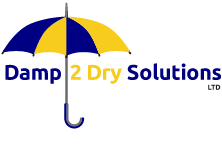
In recent years, the UK has experienced an increase in residential dampness issues, especially in areas with heavy rainfall. This has led to a growing interest in effective waterproofing solutions. Among these solutions, the terms “tanking” and “lining” are often mentioned. However, these methods are frequently misunderstood and used interchangeably.
Understanding the difference between tanking and lining is crucial for choosing the right solution for your property’s waterproofing needs. In this post, we will explore what each method entails, highlight their differences, and provide guidance on when to use each approach.
What is Tanking?
Tanking is a waterproofing method that involves applying a solid, waterproof barrier to walls, floors, and sometimes ceilings. This method is particularly common in underground spaces like basements or in areas directly in contact with soil, such as retaining walls.
According to a study by the Property Care Association, approximately 15% of UK homes experience damp issues, with basements being particularly vulnerable.
Here are some other things you should be aware of regarding tanking waterproofing work:
Materials used in Tanking
The materials used for tanking often include liquid membranes that are either painted or sprayed on, as well as cementitious coatings, which are a mix of cement and a waterproofing agent applied like plaster. Popular products for tanking include the Newton HydroBond and HydroCoat systems.
These barrier protection systems can be applied to either the external or internal surfaces of a structure to prevent water ingress. This type of solution is ideal for environments where water pressure can be intense, such as basements or below-ground constructions.
Tanking Applications
Tanking is ideal for areas that experience high levels of hydrostatic pressure, meaning places where water pressure builds up against the structure’s surfaces.
Pros and Cons of Tanking System
The major advantage of tanking is its robust resistance to water pressure. However, it can be costly and requires a significant level of skill to apply correctly.
What is Lining?
Lining serves as a protective layer that prevents water from passing through it, focusing more on creating a waterproof seal than resisting pressure. A survey by the UK Green Building Council found that green roofs, which often use lining, can reduce water runoff by up to 50%.
Materials Used in Lining
Common materials for lining include synthetic sheets like PVC or rubber. These sheets are flexible and can be tailored to fit various spaces and shapes.
Notable products for lining include the WaterGuard system from Impey, which offers a flexible, waterproofing membrane that provides a watertight barrier on both floors and walls. It is particularly valued for its ease of installation and compatibility with underfloor heating systems.
When to Use a Lining Waterproofing System
Lining is used in scenarios where flexibility and coverage are key, such as lining for ponds or green roofs, where water exposure is constant but not under high pressure.
Impey reports that their WaterGuard system has a 98% customer satisfaction rate, highlighting its effectiveness and ease of use.
Advantages and Disadvantages of Lining
Lining is often more affordable and easier to install than tanking. However, it might not be suitable for situations where water pressure is intense, as it can detach from the surfaces it covers.
Key Differences Between Tanking and Lining
By understanding these distinctions, you can better decide which method, tanking or lining, suits your specific needs based on the environmental demands and the physical properties required for your waterproofing project. Here are some key differences between tanking and lining:
Material Effectiveness: Comparing Tanking and Lining in High-Pressure Environments
Material Effectiveness for Tanking
The materials used for tanking, such as liquid membranes and cementitious coatings, are designed to form a solid barrier against water. This makes them extremely effective in environments where water pressure is high, like underground rooms or places prone to flooding.
Material Effectiveness for Lining
Lining materials like PVC or rubber sheets are waterproof but more flexible. They are excellent for surfaces that need to adapt to different shapes and sizes, such as curved garden ponds or irregularly shaped roofs. Although they handle standing water well, they are not suited for resisting heavy water pressure.
Cost and Maintenance: Evaluating the Long-Term Value of Tanking versus Lining
Cost and Maintenance for Tanking
Installing tanking systems is often more expensive due to the need for professional application and the cost of materials. However, once installed, tanking requires little maintenance, making it a durable option in the long run.
Cost and Maintenance for Lining
Lining is generally less costly upfront and is easier to install, often suitable for a do-it-yourself project for experienced homeowners. However, liners can be prone to damage from sharp objects and may require periodic checks and repairs to ensure they remain effective.
Project Suitability: Choosing Between Tanking and Lining for Different Types of Construction
Project Suitability for Tanking
Best suited for new construction projects or major renovations where you can apply the waterproofing from the inside of the structure. It’s particularly recommended for areas below ground level or in very wet regions where water ingress poses a regular problem.
How many years does tanking last? Tanking can last for 10 to 20 years, depending on the quality of materials used and the conditions it is exposed to.
Project Suitability for Lining
Ideal for retrofit projects or external applications. It’s a great choice for waterproofing projects that need a flexible solution, such as lining a pond or protecting a flat roof. Lining can be quickly applied and adapted to a variety of settings, although it may not offer the same level of protection against pressurised water as tanking.
In a nutshell
Choosing between tanking and lining depends on the specific needs of your project. Understanding the environmental demands and the physical properties required for your waterproofing can guide your decision.
For further insights into waterproofing techniques, consider consulting a local expert or referring to building standards published by UK professional organisations.
Not sure whether to choose tanking or lining?
Damp 2 Dry Solutions Ltd offers professional consultations to help you make the best choice for your home or business. Trust us to protect your space from unwanted moisture with the latest in waterproofing technology. Book your survey today!
Areas We Cover
If you are outside these areas, do not worry. Our business is expanding rapidly, and we are always delighted to hear from clients anywhere in the UK. However, we do not currently cover Southport, Blackpool, or Preston.
Get in touch, and we will be happy to offer you our full service, starting with a no-obligation damp survey to assess your problems and recommend solutions.

